How Long the Pregnancy of Different Animals Lasts
Procreation is an essential part of animal life. At the same time, the duration of pregnancy in various representatives of the animal kingdom varies from 12 days to 2 years.
5-Minute Crafts found out how long pregnancy, for different representatives of fauna, lasts.
Opossums
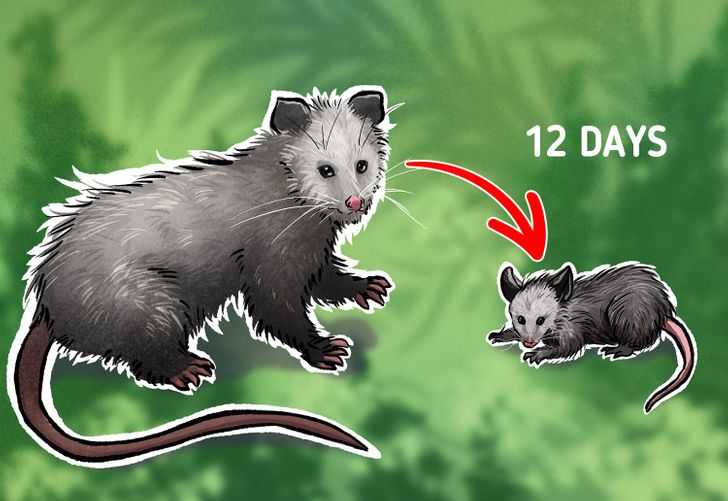
Opossums’ pregnancy lasts for only 12 days.
Opossums are marsupials and their cubs leave their mother’s pouch for the first time after about 2 months after birth. However, they remain with their mother for some time before starting to lead an independent life.
Mice
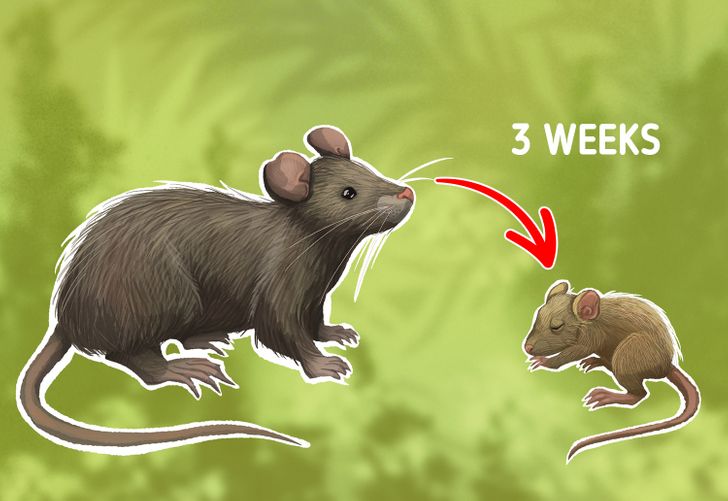
A mouse’s pregnancy lasts for about 3 weeks. A female mouse gives birth to about 5-10 litters annually. On average, a mouse gives birth to 5-6 cubs in every litter, though there are cases where 12 mice are born at once.
Mice cubs are born without hair and blind, but after 3 weeks they can basically exist on their own.
Kangaroo
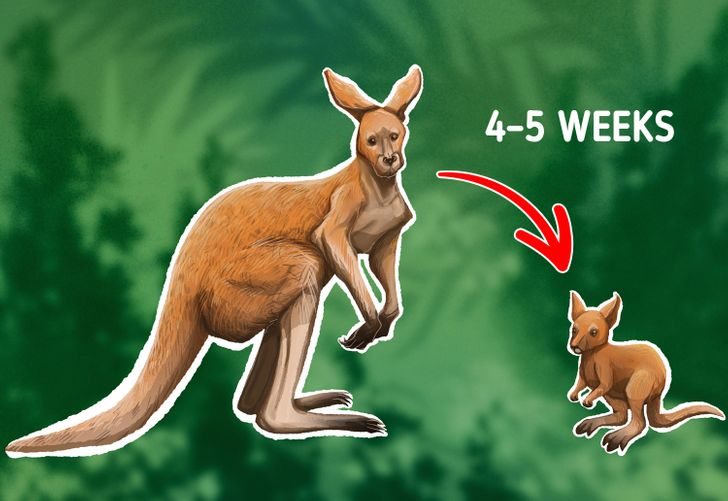
A kangaroo’s pregnancy lasts for 4-5 weeks. At the same time, they have one baby every year.
Kangaroo babies are born the size of a pea and remain in the pouch for 4 to 15 months. Only after this period is the kangaroo baby ready to explore the world around it on its own.
Dogs
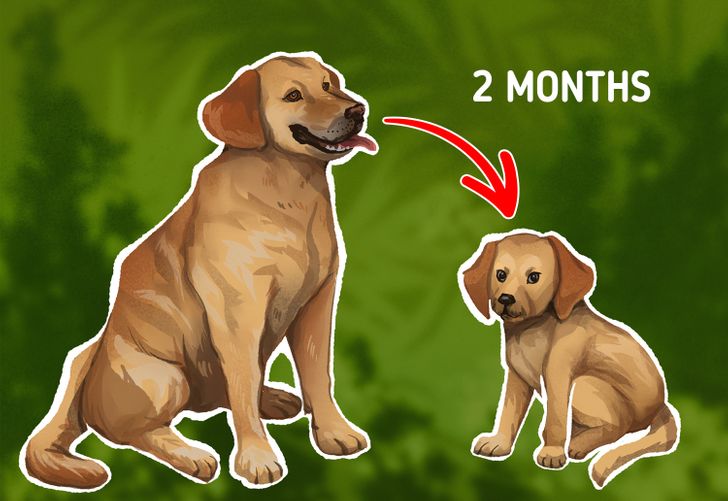
A dog’s pregnancy lasts for about 2 months. This period can increase to 70 days depending on when exactly conception happened.
Newborn puppies are absolutely helpless and are completely dependent on their mother. With proper feeding during the first week of their life, the puppies of most breeds double their body weight.
Cats
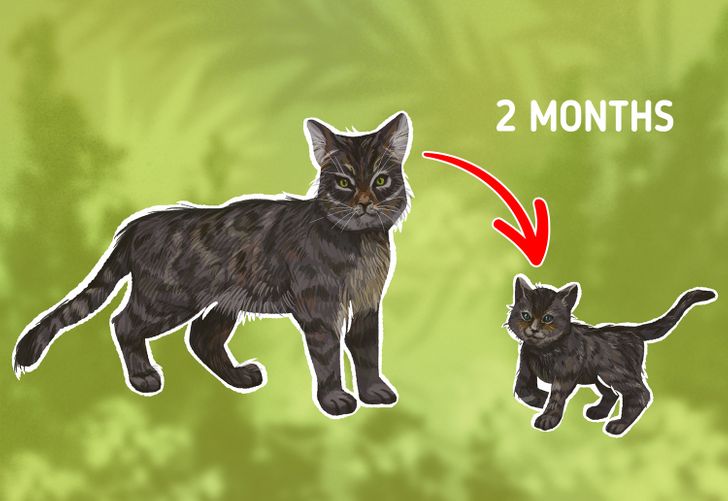
Just like a dog’s pregnancy, a cat’s pregnancy lasts for about 2 months. However, there are many cases when their pregnancy increases to 70 days. Depending on the breed, a cat can give birth to 1-12 kittens. Larger litters are seen in Siamese and Burmese breeds of cats.
Newborn kittens are very sensitive to the temperature of the environment, that’s why the mother cat strives to find a warm place for them.
Goats
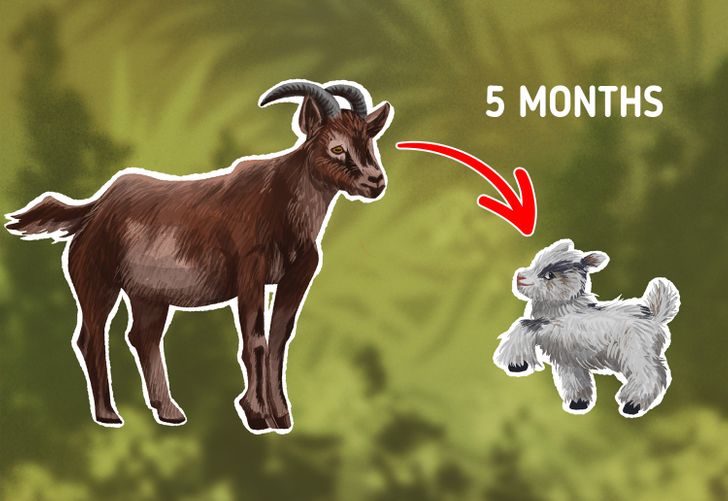
A goat’s pregnancy lasts for 5 months. During the first pregnancy, a goat gives birth to 1-2 cubs. If it’s not the first time a goat is giving birth to babies, the number of babies can be up to 5.
Complementary feeding for baby goats starts within a week after their birth. They can be released to pasture after just one month.
Hippos
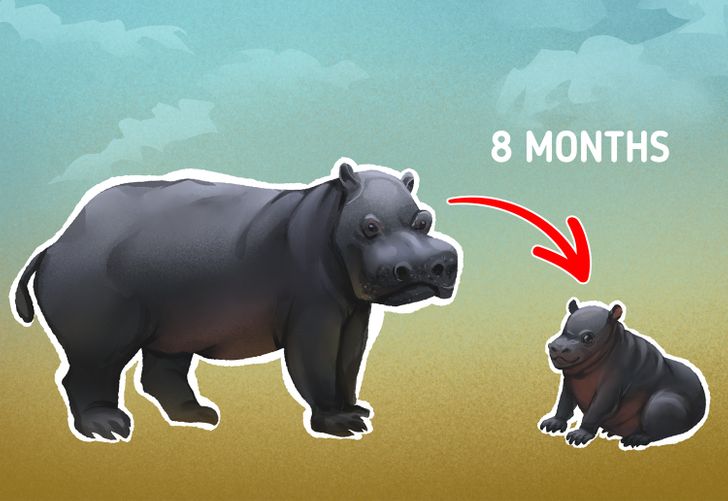
A hippo’s pregnancy lasts for 8 months. When a hippo female feels she is about to give birth to her cub, she leaves the herd to seek out an isolated place.
Newly born hippos weigh about 100 lbs. They can hold their breath in water for only 40 seconds. They leave the water after a few days, when they get a little stronger.
Cows
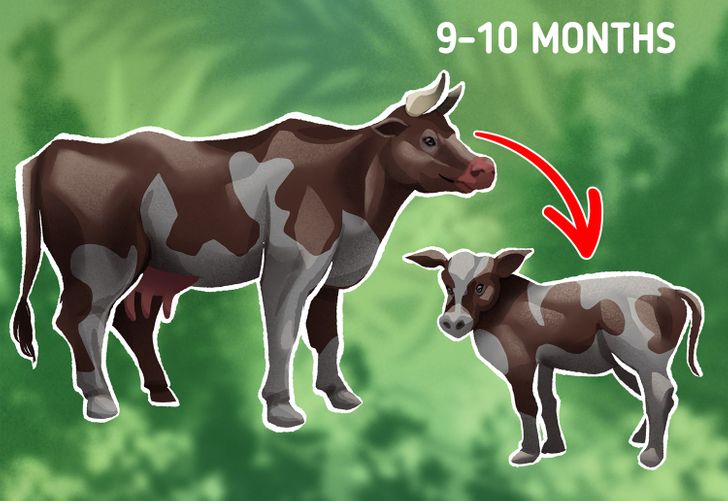
A cow’s pregnancy lasts from 9 to 10 months. Early birth can be triggered by stress, so it is important to keep a cow comfortable.
Newborn calves get all the necessary nutrients from their mother’s milk, but in any case, they need to have access to water and solid feed.
Dolphins
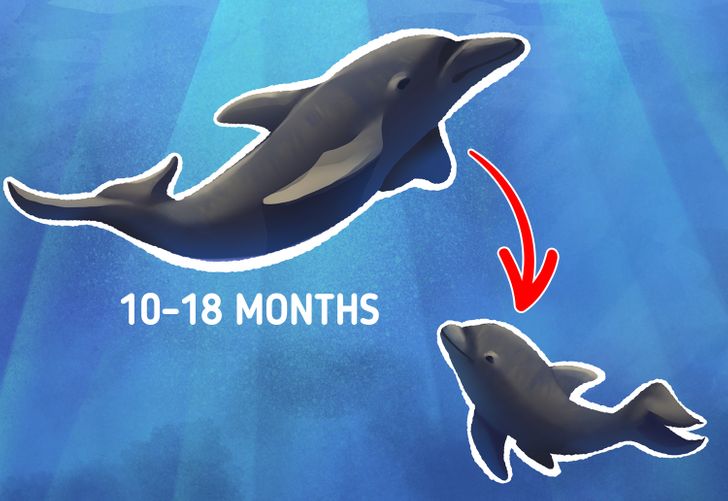
A dolphin’s pregnancy lasts from 10 to 18 months depending on their breed. A female dolphin has young about once every 2-3 years on average. There can often be another assisting female dolphin near the one giving birth.
A dolphin baby develops quite fast. It takes its place next to its mother, falling into a stream of water. As a result, it doesn’t have to spend a lot of energy to swim: the water itself carries the cub forward.
Walruses
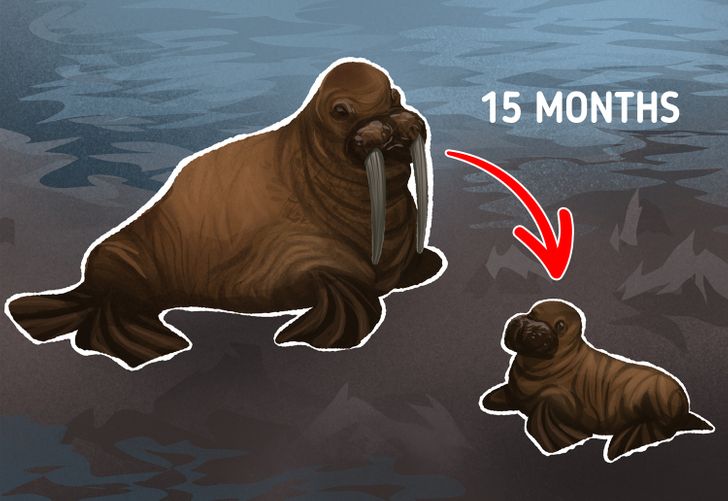
A walrus’s pregnancy lasts for about 15 months. Walrus babies are born once in 3 years. They weigh up to 165 lbs when they are born and they can swim. A walrus calf stays with its mother for 2 years or longer depending on when she gives birth to another young.
Walruses are very social animals, that’s why small calves are protected not only by their mother but also by any other female calves of the herd.
Elephants
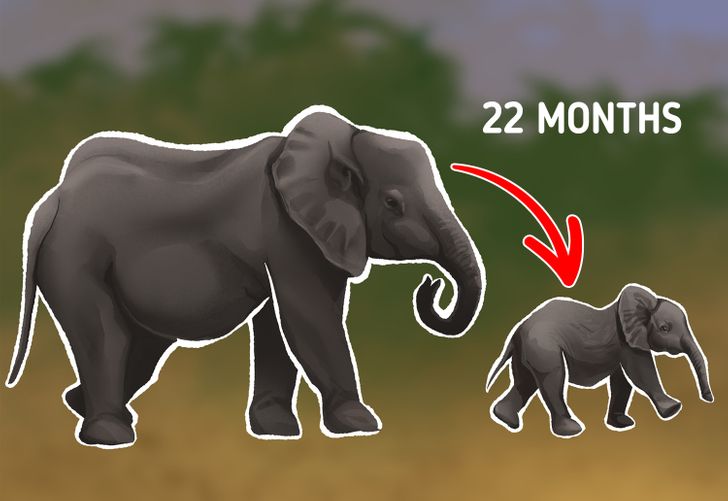
An elephant’s pregnancy can last up to 22 months. A female elephant’s body needs almost 2 years to grow an elephant baby whose weight can reach 265 lbs.
1-2 hours after the birth, an elephant cub can move by itself. All the female elephants of the herd take care of the baby. Elephants surround the female and newborn elephants in a dense circle, preparing to protect them from the slightest danger.
As you can see from the examples above, the timing of pregnancy in mammals directly depends on their size and how developed the fetus is at the time of birth.